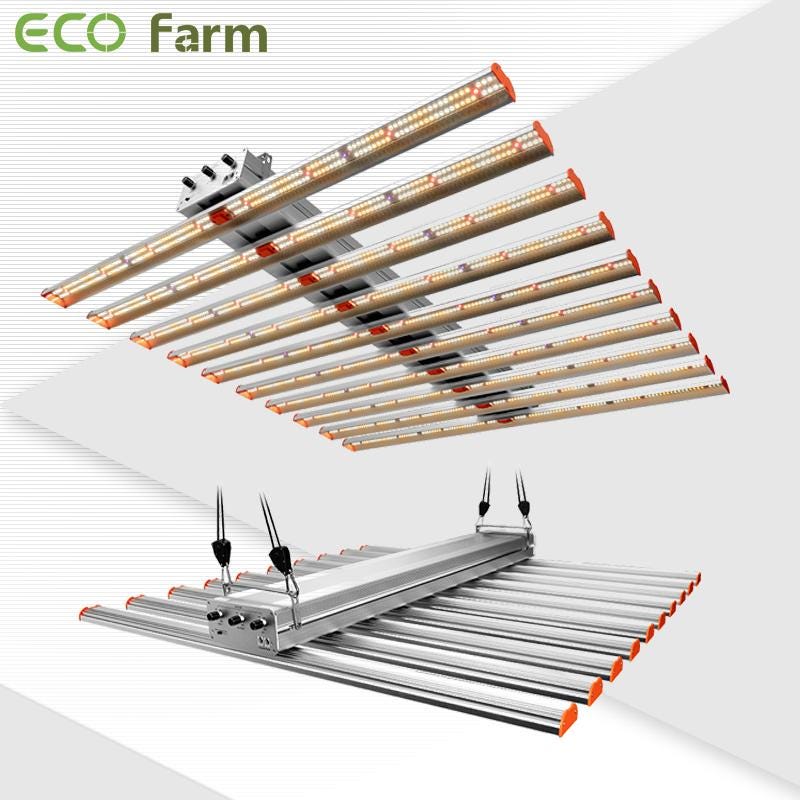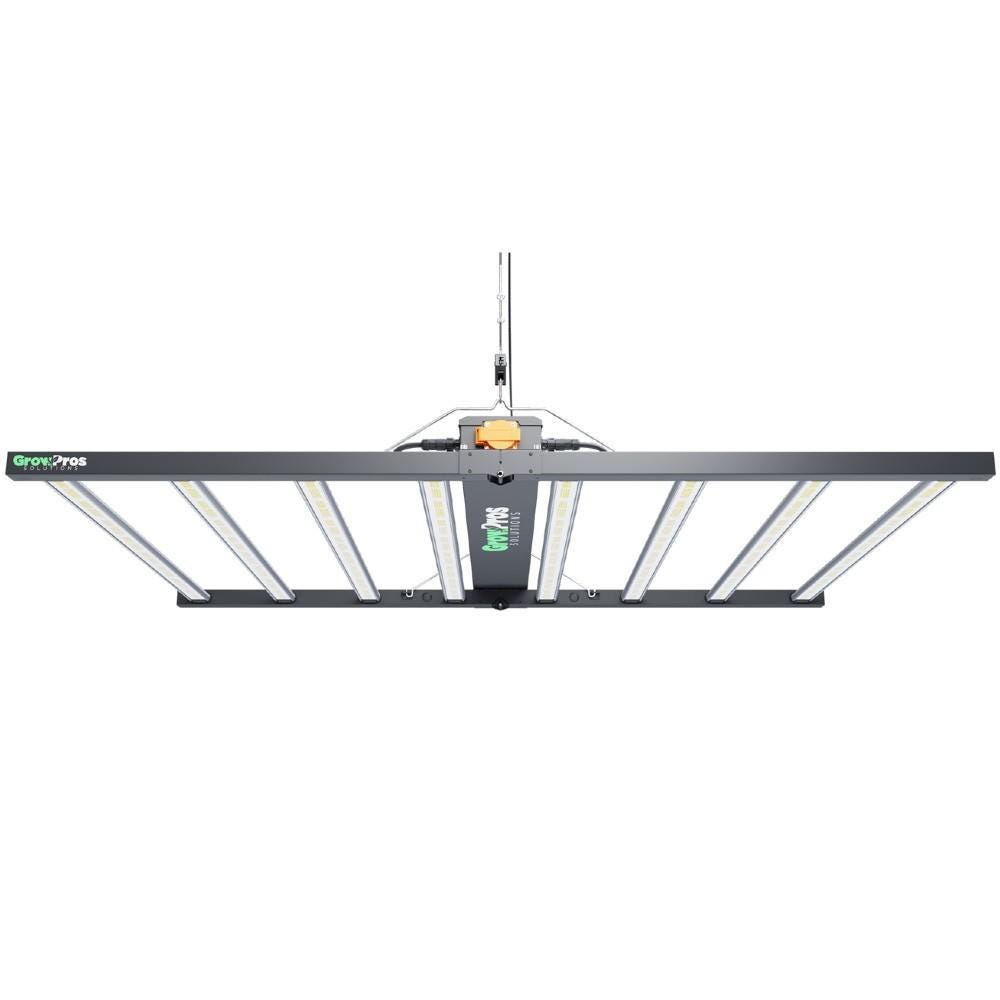- Home
- SHOP ECO FARM
-
TOP BRANDS
-
Grow Lights Brands
- Adjust-A-Wing
- Apollo Horticulture
- Bestva
- Black Dog LED
- California Lightworks
- ChilLED Grow Light
- Eco Farm
- HLG - Horticulture Lighting Group
- Kingled
- Kind LED
- Mars Hydro
- Morsen
- Neilo
- NextLight
- Phlizon
- PlatinumLed
- Roleadro
- Optic LED Grow Lights
- ViparSpectra
- Vivosun
- EYE Hortilux
- IPOWER
- NanoLux
- Phantom grow light
- Gavita grow lights
- Grower's Choice
- Lumatek
- Maxibright
- Yearld Pro
- ThinkGrow
- Crecer Lighting
- Green Sunshine Electric Sky
- fohse aries
- loriflux
- luxx
- fluence
- iluminar
- Lex
- LTC
- Rayonled
- FGI
- PHOTONTEK
- Grow Tents & Kits Brands
- Extraction & Harvest Brands
- Climate Control & Hydroponic Brands
-
Grow Lights Brands
- COMPANY INFO
- COOPERATE WITH US
- Blog
- Sign in
- Home
-
SHOP ECO FARM
- ECO Farm Grow Lights
- ECO Farm LED Grow Lights
- ECO Farm Quantum Board
- ECO Farm Samsung LED Grow Lights
- ECO Farm COB Grow Lights
- ECO Farm Commercial Lights
- ECO Farm Supplemental Grow Light
- ECO Farm Fluorescent grow lights
- ECO Farm HPS & MH Grow Lights
- ECO Farm CMH Grow Lights
- ECO Farm HID/CMH Bulbs & Ballasts
- ECO Farm Grow Tents & Kits
- ECO Farm 2x2ft Grow Kits
- ECO Farm 3x3ft Grow Kits
- ECO Farm 3.3x3.3ft Grow Kits
- ECO Farm 4x4ft Grow Kits
- ECO Farm 5x5ft Grow Kits
- ECO Farm Grow Tent - Standard Style
- ECO Farm Grow Tent - Extension & Roof & Lodge Style
- ECO Farm Extraction & Harvest
- ECO Farm Rosin Press Machine
- ECO Farm Dry & Wet Trimmers
- ECO Farm Oil Accessories
- ECO Farm Medicinal Plants Grinder
- ECO Farm Medicinal Plants Containers
- ECO Farm Medicinal Plants Dryer
- ECO Farm Refrigeration Dryer
- ECO Farm Climate Control & Other Accessories
- ECO Farm Inline Duct Fans
- ECO Farm Oscillating Fans
- ECO Farm Exhaust Fans
- ECO Farm Air Filter
- ECO Farm Duct Muffler
- ECO Farm Ventilation Kits
- ECO Farm Plant Humidifiers
- ECO Farm Plant Dehumidifiers
- ECO Farm Hydroponic Accessories
- ECO Farm Other Accessories
- ECO Farm Hydroponics Microscopes
-
TOP BRANDS
- Grow Lights Brands
- Adjust-A-Wing
- Apollo Horticulture
- Bestva
- Black Dog LED
- California Lightworks
- ChilLED Grow Light
- Eco Farm
- HLG - Horticulture Lighting Group
- Kingled
- Kind LED
- Mars Hydro
- Morsen
- Neilo
- NextLight
- Phlizon
- PlatinumLed
- Roleadro
- Optic LED Grow Lights
- ViparSpectra
- Vivosun
- EYE Hortilux
- IPOWER
- NanoLux
- Phantom grow light
- Gavita grow lights
- Grower's Choice
- Lumatek
- Maxibright
- Yearld Pro
- ThinkGrow
- Crecer Lighting
- Green Sunshine Electric Sky
- fohse aries
- loriflux
- luxx
- fluence
- iluminar
- Lex
- LTC
- Rayonled
- FGI
- PHOTONTEK
- Grow Tents & Kits Brands
- Apollo Horticulture
- Black Box
- CoolGrows
- Eco Farm
- GrowLab
- Gorilla Grow Tents
- Mars Hydro
- Quictent
- Secret Jardin
- Unit Farm
- TopoGrow
- VIVOSUN
- Topolite
-
COMPANY INFO
-
COOPERATE WITH US
- Blog
ECO Farm ECOZ 1000W Samsung 301H Chips LED Grow Light VS GrowPros HM960 LED Grow Light For Indoor Plants
November 19, 2021
Whether you have a green thumb or this is your first garden, you should consider where it can get light. If you live in a small apartment or a cloudy city, you may not have much sunlight. So you may want to consider alternative lighting options.
Plants can grow with artificial light, but not all artificial lights are beneficial for plants. Grow lights are artificial lights designed to emit the specific colors (wavelengths) of light–mostly blue and red light–that plants require for optimal growth.
If you want to grow a plant indoors–especially in a low-light area–you should consider artificial lighting options. While the sun might work for plants near windows, artificial lights can also help plants grow. Keep reading to learn more about growing plants with artificial light.
Can You Burn Plants with Grow Lights?
You can burn your plants — regardless of what they are — with grow lights. But it’s usually not the light intensity that does the burning.
Rather, grow lights that emit a lot of heat, and if placed too close to the plants, can cause photo-bleaching and even burn the leaves.
This can be avoided, though, by careful monitoring of the plants and lights, and controlling the length of time for which the plant is getting light.
As well as making sure that you have the correct distance to wattage ratio.
Can Heat from Grow Lights Burn Plants?
If your plants are getting burned from their grow lights, chances are that there is too much heat coming off the light. Or it is just too close to the plant.
Some grow lights produce less heat than others, and these have a much lower chance of ‘sunburning’ your plant.
ECO Farm ECOZ 1000W Samsung 301H Chips LED Grow Light

Features:
This ECO Farm grow light is a good assistant for home growers, which contains white light 5000K, red light ( 3000K+660nm+730nm), and UV 395nm, which is ideal for different stages of plant growth from seeds to harvest (germination, clones or cuttings, mothers, vegetative, and flowering). 3000K provides more warm white lights, 5000K provides more neutral-white lights, 660nm red lights is perfect for photosynthesis, and 730nm IR lights will promote flowering. Industry top efficacy and light output — 2.9 μmol/j, high PPFD value grow light adopts the latest LED plant light technology with Samsung LM301H (5000K+3000K)+Osram ssl80(660nm+730nm)+Refond (395nm). Growing light is made of die-casting aluminium that is good for heat dissipation, which is to make it reach the estimated lifetime of 50000 hours at least. This LED grow light bar is perfect for 6x6ft vegetative coverage and 5x5ft flowering coverage. Widely applied in the commercial growing, climate rooms, house garden, home grows (grow tent and box), greenhouse cultivation, pipeline cultivation, hydroponics.
GrowPros HM960 LED Grow Light For Indoor Plants

Features:
The GrowPros grow light produces 1.8 gram per watts (dried) of crop yield. Generating about 50% more in energy savings over traditional HID and HPS light sources, the HM960 gives you meaningful savings over time. Will not produce the same results without CO2 supplementation. The HM960 Series system runs cool thanks to a passive cooling thermal management system, meaning your lighting systems last longer while retaining high light output levels. A longer lifespan means you can grow crops for many years without needing to replace the lighting system, reducing costs. Indoor plants grow best under full-spectrum lights, which replicate the natural spectrum of the sun. The HM960 Series, with an increased lifespan over traditional, grow light sources, cultivates healthier, happier plants.
How long to keep the LED grow light on
It would be best to run the grow lights as long as it takes to make sure your plants get about 12 hours of light every day. This could mean running the light for a full 12 hours.
Alternatively, if your plants are already near a sunny window, you could run the light in the morning before the sun comes up and again in the evening after it goes down. This is especially relevant in the winter when the days are short.
Remember that some plants require long days — up to 16 hours of light — to thrive and bloom, while others need short days, as few as 10 hours of light.
Some grow lights come with a timer function so you can make sure your plants don’t get too much or too little light. A timer enables you to provide consistency for your plants.
If the light doesn’t come with a built-in timer, you can buy one that plugs in between the lamp and the outlet. These are commonly used for Christmas lights and decorations, so while they are available at the hardware store year-round, they may be easier to find in December.
The Effects of Each Color of Light
First, here is a quick summary, with extended information following:
Ultraviolet — No exposure produces better growth
Violet — Enhances the color, taste, and aroma of plants
Blue — Increases the growth rate of plants
Green — Enhances chlorophyll production and is used as a pigment for proper plant viewing
Yellow — Plants exhibit less growth compared to blue and red light
Red — When combined with blue light it yields more leaves and crops, depending on what is being grown
Far Red — Speeds up the Phytochrome conversion which reduces the time a plant takes to go into a night-time state. This allows the plant to produce a greater yield
The reason why items are the color that they are is because some objects will absorb the wavelengths, and others will be reflected. For example, a leaf is green because it absorbs all visible light wavelengths except for green- green is reflected.
Black and white are not considered colors because black absorbs all visible light wavelengths, while white reflects them all. This is why black objects get hot in the sun faster than white items.
Fun Fact: Rainbows occur when white light is dispersed through water vapor. This is why it’s common to see rainbows after it rains!
Conclusion
We know choosing the perfect grow light for your grow room can be a difficult and overwhelming process. That said, we hope we’ve helped you at least narrow your options down.
Just remember: There’s really no wrong way to go so long as you follow the tips and guidelines provided in this article.
Also in Indoor Grow LED Grow Light
HLG Greenhouse Pro HE HV 630W LED Grow Light VS Geeklight grow light 480W hydroponic led grow light
October 20, 2023
